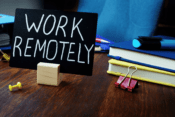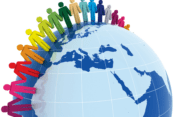
The impact of technology on work-life balance
The rise of technology has revolutionized nearly every aspect of our lives, offering tools and conveniences that were unimaginable just a few decades ago. From remote work platforms to instant messaging apps, technology has made communication and productivity more seamless than ever. However, this constant connectivity has also blurred the lines between work and personal life, leading to an ongoing debate about its impact on our overall well-being.
Recent research highlights the double-edged nature of this phenomenon. A study published in The Journal of Occupational Health Psychology found that while technology allows for greater flexibility in work schedules, it also contributes to increased stress due to the inability to fully disconnect. Moreover, trends like “quiet quitting” and “burnout culture” underscore the growing struggle employees face in maintaining a healthy work-life balance.
As we delve deeper, we’ll explore how technology influences this balance, the challenges it creates, and strategies to harness its benefits without sacrificing personal well-being.
The Double-Edged Sword of Technology
Technology has undoubtedly revolutionized the way we work. It has empowered us to work remotely, collaborate seamlessly with colleagues across the globe, and access information at our fingertips. However, this constant connectivity has also come with a price.
Always Connected, Always Working
Technology has ushered in the era of constant connectivity. With smartphones, laptops, and collaboration tools like Slack and Microsoft Teams, the workday no longer ends when you leave the office. According to a recent study by Gallup, 62% of remote workers feel pressured to respond to emails and messages outside of work hours. This “always-on” culture blurs the lines between professional and personal life, leading to burnout and stress.
Increased Productivity at a Cost
There’s no denying that technology has made us more productive. Tools like Asana, Trello, and Zoom enable seamless project management and communication. However, this productivity often comes at a personal cost. A survey by Deloitte found that while 78% of employees felt more efficient due to digital tools, 54% also reported a decline in their ability to disconnect after hours.
The Role of Remote Work
Remote work, accelerated by the COVID-19 pandemic, has fundamentally changed how we think about work-life balance. While working from home provides flexibility, it also eliminates the physical boundaries of an office. A report by Buffer revealed that 22% of remote workers struggle with unplugging from work, illustrating how technology can make it harder to draw the line between work and personal life.
Positive Impacts of Technology on Work-Life Balance
Flexibility and Autonomy
On the flip side, technology has empowered workers with unparalleled flexibility. Parents can attend their child’s school event while still completing work tasks later in the day. A Pew Research Center study highlighted that 60% of workers find technology beneficial for balancing work and personal responsibilities.
Enhanced Wellness Resources
Technology has also brought wellness tools to our fingertips. Apps like Calm and Headspace offer guided meditations, while wearable tech tracks fitness metrics, encouraging a healthier lifestyle. These tools can serve as a counterbalance to the stress induced by an always-on work environment.
Reclaiming Control: Strategies for a Healthier Work-Life Balance
To navigate the complexities of the digital age and maintain a healthy work-life balance, we need to adopt proactive strategies. Here are some tips to help you regain control:
- Set Boundaries:
- Dedicated Workspace: Create a designated workspace that is free from distractions.
- Schedule Work Hours: Establish clear work hours and stick to them.
- Digital Detox: Schedule regular breaks from technology to rest and recharge.
- Prioritize Tasks:
- Time Management Techniques: Use techniques like the Pomodoro Technique to improve focus and productivity.
- Task Prioritization: Identify and prioritize important tasks to avoid feeling overwhelmed.
- Mindful Technology Use:
- Mindful Notifications: Turn off unnecessary notifications to reduce distractions.
- Social Media Breaks: Limit your social media usage to specific times.
- Digital Detox Retreats: Take regular breaks from technology to refresh your mind and body.
- Cultivate Mindfulness:
- Meditation and Yoga: Practice mindfulness techniques to reduce stress and improve focus.
- Nature Therapy: Spend time in nature to connect with the natural world and reduce stress.
- Seek Support:
- Open Communication: Talk to your employer or colleagues about your workload and boundaries.
- Professional Help: Consider seeking therapy or counseling to manage stress and anxiety.
Expert Insights
- Dr. Cal Newport, author of “Deep Work,” emphasizes the importance of focused work and digital minimalism. He advocates for scheduling focused work blocks and minimizing distractions.
- Dr. Caroline Leaf, a communication pathologist and cognitive neuroscientist, highlights the impact of negative thinking on mental health. She suggests practicing positive self-talk and challenging negative thought patterns.
The Road Ahead
As technology continues to evolve, it is crucial to find a balance between embracing its benefits and protecting our well-being. By implementing these strategies and seeking support, we can reclaim control of our work-life balance and lead fulfilling lives.
References
- Gallup. “State of the Workplace: 2023.” Gallup.com
- Deloitte. “Digital Tools and Workforce Productivity: A 2023 Survey.” Deloitte.com
- Newport, C. (2016). Deep Work: Rules for Focused Success in a Distracted World. Grand Central Publishing.
- Leaf, C. (2015). Switch on Your Brain: The Science of Thought and Emotion. Hay House.
- Pew Research Center. “The Future of Work and Technology.” PewResearch.org
- Buffer. “State of Remote Work 2023.” Buffer.com
- Harvard Business Review. “The Mindful Use of Technology in the Workplace.” HBR.org













